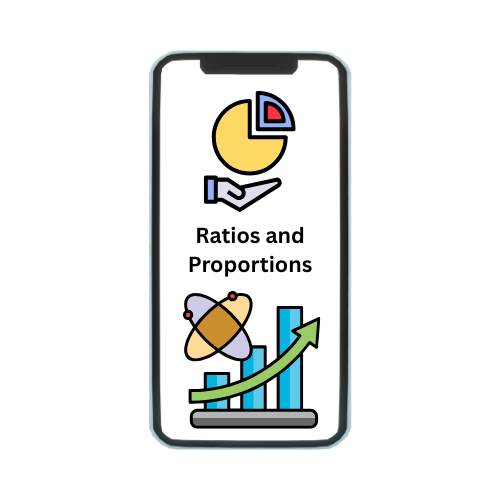When embarking on an investment journey, defining your investment objective is a crucial first step. An investment objective serves as a roadmap for your financial decisions, guiding you towards achieving specific financial goals. It involves clearly identifying what you hope to accomplish through your investments, whether it’s growing your wealth over the long term, generating a steady income, or preserving your capital. Your investment objective helps shape your investment strategy by determining the appropriate asset allocation, risk tolerance, and time horizon for your investments. For instance, if your goal is to save for retirement, you might prioritize long-term growth with a diversified portfolio of stocks and bonds. Conversely, if you are seeking to generate immediate income, you might focus on dividend-paying stocks or fixed-income securities. Understanding and articulating your investment objective ensures that your financial choices align with your personal aspirations and needs, setting a clear path for making informed and effective investment decisions.
What Is An Investment Objective?
An investment objective is a clear, defined goal that guides an individual’s investment decisions and strategies. It represents the purpose behind making investments, serving as a foundational element of a financial plan. Investment objectives are tailored to personal financial needs and can vary widely from one person to another. They encompass various aspirations, such as accumulating wealth for retirement, saving for a child’s education, or building a fund for a major purchase like a home. Defining an investment objective involves considering factors such as the desired outcome of the investment, the time frame for achieving the goal, and the level of risk one is willing to take. For instance, if your objective is to grow your savings for a comfortable retirement in 30 years, you might focus on long-term growth investments, such as equities and mutual funds. Alternatively, if your goal is to preserve your capital and generate a steady income, you might opt for safer, income-producing assets like bonds or dividend-paying stocks. By establishing a clear investment objective, you create a framework that helps you select suitable investment options, measure progress, and stay focused on your financial goals over time.
Types Of Investment Objectives
Understanding the various types of investment objectives is essential for tailoring your financial strategy to meet your specific goals. Investment objectives can be broadly categorized into several types, each addressing different financial needs and preferences.
- Capital Growth
Capital growth is an investment objective focused on increasing the value of your investments over time. Investors aiming for capital growth are usually looking for higher returns through appreciation of their investments, often by investing in assets like stocks, mutual funds, or real estate. This objective is typically associated with a longer time horizon and a higher risk tolerance, as the goal is to build wealth gradually and benefit from market upswings.
- Income Generation
The objective of income generation involves creating a steady stream of cash flow from investments. Investors pursuing this goal often seek assets that provide regular income, such as dividend-paying stocks, bonds, or rental properties. This approach is suitable for individuals who need consistent cash flow for living expenses or want to supplement their income. Income-generating investments tend to offer lower risk compared to high-growth assets but may provide more stable, predictable returns.
- Capital Preservation
Capital preservation is a conservative investment objective aimed at protecting the initial amount of money invested. Investors with this goal prioritize safeguarding their principal investment rather than seeking high returns. They typically choose low-risk investments such as savings accounts, certificates of deposit (CDs), or government bonds. This objective is ideal for individuals who are nearing retirement or need to preserve wealth for future use.
- Speculation
Speculation involves seeking high returns through higher-risk investments. Investors with a speculative objective are willing to accept significant risks for the potential of substantial rewards. This type of objective might include trading in volatile markets, investing in startups, or buying speculative stocks. Speculation is suitable for those who have a high risk tolerance and a shorter investment horizon, aiming to achieve significant gains from market fluctuations.
- Tax Efficiency
Tax efficiency as an investment objective focuses on minimizing the tax impact of your investments. Investors pursuing this goal seek to maximize returns by utilizing tax-advantaged accounts or investments, such as IRAs, 401(k)s, or municipal bonds. This objective is important for those who aim to reduce their tax burden and increase after-tax returns on their investments.
- Saving for Specific Goals
Saving for specific goals involves setting aside funds for a particular future expense or milestone. This type of objective might include saving for a child’s education, a down payment on a house, or a vacation. Investors with this goal will choose investment strategies based on the time frame and amount required for the specific goal, balancing risk and return to meet their target.
How To Define Investment Objectives
Defining investment objectives is a critical step in developing a successful financial strategy. This process involves several key steps that help you clarify your goals and determine the best approach to achieve them.
- Assess Your Financial Situation
The first step in defining your investment objectives is to assess your financial situation. This involves taking a comprehensive look at your current financial status, including your income, expenses, assets, and liabilities. Understanding your financial health helps you determine how much you can invest and what level of risk you can afford to take. Consider creating a detailed budget and evaluating your net worth to get a clear picture of where you stand financially.
- Identify Your Goals
Next, you need to identify your goals. Think about what you want to achieve with your investments. Are you saving for retirement, buying a home, or funding a child’s education? Be specific about what you want to accomplish and establish clear, measurable goals. For instance, instead of saying, “I want to save for retirement,” set a more precise goal like, “I want to accumulate $1 million for retirement by age 65.”
- Determine Your Time Horizon
Your time horizon is the period over which you plan to achieve your investment goals. It can range from short-term (a few months to a few years) to long-term (several decades). Your time horizon influences your investment choices and risk tolerance. For short-term goals, you might prefer safer, more liquid investments, while long-term goals may allow for higher risk and potential rewards.
- Evaluate Your Risk Tolerance
Risk tolerance refers to how comfortable you are with the possibility of losing money on your investments. It is influenced by factors such as your financial situation, investment experience, and emotional response to market fluctuations. Understanding your risk tolerance helps you choose investments that align with your comfort level and ensures that you can handle market volatility without making hasty decisions.
- Set Specific and Achievable Objectives
Your investment objectives should be specific and achievable. Instead of vague targets, aim for clear and realistic goals that you can work towards. For example, rather than saying, “I want to grow my savings,” you might say, “I aim to increase my savings by 5% annually over the next five years.” Specific objectives are easier to track and measure, helping you stay focused and motivated.
- Consider Tax Implications
Tax implications are an important aspect of defining your investment objectives. Different investments come with varying tax consequences, so it’s crucial to consider how your choices will affect your tax situation. Look for tax-efficient investment options or consult with a tax advisor to ensure that your investment strategy aligns with your financial goals and minimizes your tax liability.
- Review and Adjust Your Objectives
Finally, it’s important to review and adjust your objectives regularly. Your financial situation, goals, and market conditions can change over time, so periodically reassess your investment objectives to ensure they remain relevant and achievable. Regular reviews help you stay on track and make necessary adjustments to your investment strategy as life circumstances and financial markets evolve.
Examples Of Investment Objectives
Investment objectives vary widely depending on individual financial goals and personal circumstances. For instance, one common objective is retirement savings, where an individual aims to build a substantial nest egg for a comfortable retirement lifestyle, often targeting a specific amount of savings by a certain age, such as saving $1 million by age 65 through a diversified portfolio of stocks and bonds. Another objective might be wealth accumulation, where a person seeks long-term capital growth to increase their net worth over time, often investing in high-growth assets like tech stocks or mutual funds with the aim of growing their investment by 8% annually. Some might focus on income generation, targeting regular cash flow through investments like dividend-paying stocks or bonds to support monthly expenses or supplement income, such as earning $500 per month from dividends. Conversely, capital preservation is an objective for those looking to protect their investment principal, such as a retiree investing in low-risk assets like Treasury bonds to ensure their savings are safe while still earning a modest return. Another example is saving for a specific goal, like setting aside $20,000 over five years for a child’s college tuition by investing in a 529 plan or other educational savings accounts. Lastly, tax efficiency might be a priority for high-income individuals seeking to minimize their tax liabilities through investments like municipal bonds or retirement accounts that offer tax advantages. Each of these objectives requires different strategies and investments to achieve desired outcomes, tailored to the investor’s time horizon, risk tolerance, and financial aspirations.
Factors Influencing Investment Objectives
When defining your investment objectives, several key factors come into play that shape your financial goals and strategies. Understanding these factors helps you create a clear and actionable investment plan tailored to your personal situation.
- Financial Goals
Your financial goals are the primary drivers of your investment objectives. These goals might include saving for retirement, buying a home, funding a child’s education, or building an emergency fund. Each goal has different requirements in terms of time frame, amount needed, and level of risk you are willing to take. For example, saving for retirement might involve long-term growth strategies, while buying a home might require a more immediate, stable savings plan.
- Time Horizon
The time horizon is the length of time you expect to hold investments before needing the funds. A longer time horizon allows for more aggressive investment strategies, as there is time to recover from market fluctuations. Conversely, a shorter time horizon necessitates more conservative investments to ensure you have access to your funds when needed. For instance, a young investor might aim for long-term growth through stocks, while someone saving for a down payment on a house in the next few years might prefer safer, more liquid investments.
- Risk Tolerance
Risk tolerance is your ability and willingness to endure market volatility and potential losses in pursuit of higher returns. It is influenced by your financial situation, investment experience, and emotional resilience. High-risk tolerance might lead you to invest in volatile stocks or start-ups, whereas low-risk tolerance might steer you towards bonds or savings accounts. Assessing your risk tolerance helps you choose investments that align with your comfort level and financial stability.
- Financial Situation
Your current financial situation significantly affects your investment objectives. Factors such as your income, expenses, assets, and liabilities provide a foundation for determining how much you can invest and what types of investments are feasible. A stable, high-income individual might have different objectives compared to someone with fluctuating income or significant debt. A thorough review of your financial health helps set realistic investment goals.
- Investment Knowledge and Experience
Your level of investment knowledge and experience also plays a role in defining your investment objectives. Beginners might seek simpler, lower-risk investments, such as index funds or ETFs, while experienced investors might pursue complex strategies like options trading or real estate investments. Understanding your own expertise helps you choose investment vehicles that match your skill level and comfort with financial products.
Conclusion
In summary, defining your investment objectives is a fundamental step in crafting a successful financial strategy. It requires a careful evaluation of various factors such as your financial goals, time horizon, risk tolerance, financial situation, investment knowledge, economic conditions, and life stage. By thoroughly understanding these elements, you can set specific, realistic objectives that guide your investment decisions and align with your long-term aspirations. Whether you aim for capital growth, income generation, capital preservation, or saving for a specific goal, a well-defined investment objective provides direction and focus, helping you select appropriate investment options and measure your progress. It also ensures that your investment choices reflect your personal financial needs and goals, leading to more effective and satisfying financial outcomes. Regularly reviewing and adjusting your objectives in response to changes in your circumstances or market conditions further enhances your ability to achieve your financial targets. Ultimately, a thoughtful approach to defining and pursuing your investment objectives sets the foundation for a successful investment journey, empowering you to make informed decisions and work towards your financial dreams with confidence.








